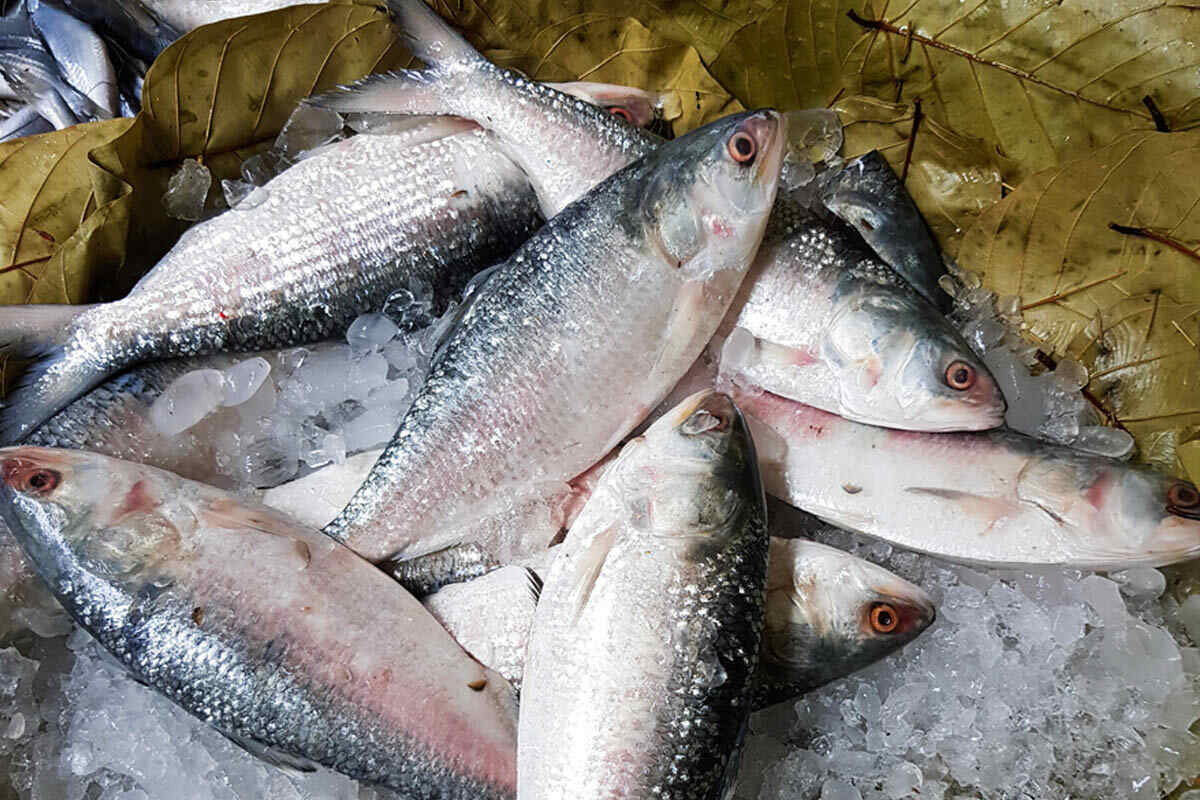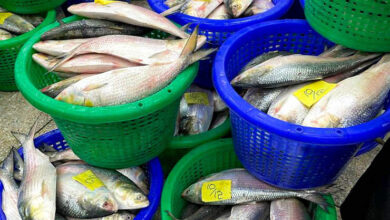
The first shipment of over 50 metric tonnes of Hilsa fish from Bangladesh has successfully reached West Bengal, India, as part of a special export arrangement during the Durga Puja festival. This follows the interim government’s decision to temporarily allow Hilsa exports to India until mid-October. Importers in West Bengal have confirmed that the prized ‘Padmar Ilish’ (Hilsa from the Padma River) is now available in markets, with more consignments expected soon.
A second consignment of another 50 metric tonnes is scheduled to arrive shortly, providing relief to West Bengal’s seafood markets as demand for Hilsa rises during the festive season. The Fish Importers’ Association had previously requested Bangladesh’s interim government to continue the tradition of Hilsa exports as a goodwill gesture for Durga Puja, a practice that has been ongoing for the past five years.
“The first consignment of over 50 metric tonnes arrived two days ago through the Petrapole border and has already been distributed to wholesale markets across Kolkata and various districts,” said Syed Anwar Maqsood, Secretary of the Association. “We are expecting the second consignment to arrive soon,” he added.
The Hilsa fish being exported ranges in size from 700 grams to 1 kilogram, with prices in West Bengal ranging from Rs 900 to Rs 1500 per kilogram, depending on the size and quality. Local fish traders in Kolkata are hopeful that by October 12, the cut-off date for imports, a total of over 2,000 metric tonnes of Hilsa will have reached India. Bangladesh will impose a temporary ban on Hilsa fishing from October 13, making this the final window for exports before the ban.
The arrival of Hilsa in West Bengal has sparked excitement, particularly in key wholesale markets such as Patipukur, Sealdah, Howrah, and Siliguri, where the fish has been available for the past two days. However, some customers have expressed dissatisfaction with the size and taste of the current stock. Sukumar Das, a fish seller at Kolkata’s Baisnabghata Rathtala market, remarked, “The demand is high, but customers are not entirely happy with the size of the fish. We expect the size to improve with future consignments.”
Currently, each fish vendor in the Baisnabghata market holds around 15-20 kilograms of imported Hilsa, with expectations that larger fish will soon follow. The high demand for Hilsa during Durga Puja has kept traders optimistic, despite initial concerns over the size and taste of the fish.
On September 21, Bangladesh’s interim government announced that it would allow the export of 3,000 tonnes of Hilsa to India as a goodwill gesture for Durga Puja, revising an earlier decision that limited the exports. The Bangladesh Ministry of Commerce issued a statement saying, “Approval has been given to export 3,000 tonnes of Hilsa to India, fulfilling specific conditions for the occasion of the upcoming Durga Puja.”
In 2023, during Sheikh Hasina’s tenure as Prime Minister, Bangladesh permitted the export of 4,000 tonnes of Hilsa to India during the Durga Puja festivities. This year’s slightly reduced export allowance reflects adjustments based on supply and demand, but the export remains a significant gesture of goodwill from Bangladesh towards India, strengthening the cultural and economic ties between the two nations during this festive season.
Durga Puja, one of the largest and most significant festivals in West Bengal, will be celebrated from October 9 to 13 this year, and Hilsa remains a central delicacy during this period. As more shipments from Bangladesh arrive, it is expected that the availability of Hilsa will continue to meet the rising demand in West Bengal’s markets.


